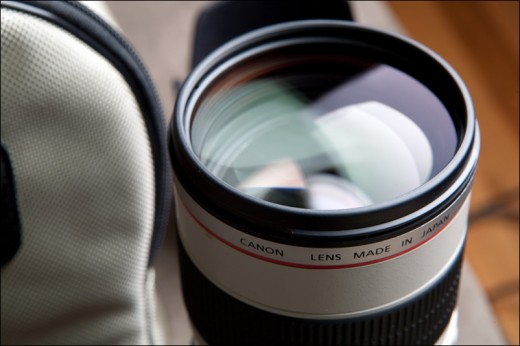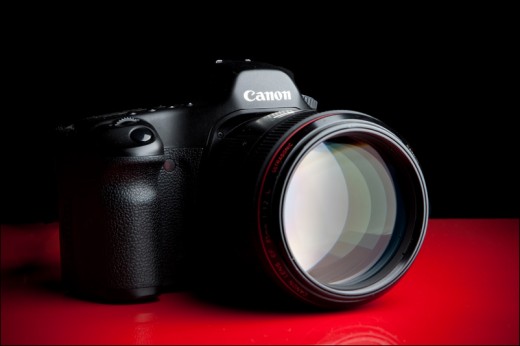G.A.S. The Race to Own the Most and Best Gear

A funny thing happened recently: for the first time since I started using a camera in earnest, I “downgraded” a lens. I sold my 70-200 f/2.8 IS and replaced it with a 70-200 f/4 IS.
When I originally sold my Nikon gear and switched to Canon, it was partly because Canon had the 70-200 f/4–it’s significantly cheaper, lighter, and smaller than its faster-aperture big brother, and I figured for my uses, it would suit me fine. All was well and fine, and as I started accumulating gear and experience, I started to get asked to shoot things in lower and lower light–weddings, receptions, concerts for the Symphony. Suddenly, it seemed like I “had” to have the 70-200 f/2.8 IS. So I sold the f/4, bought the f/2.8, and used it about once every two months when I thought I “needed” it. Funny thing is, more often than not I would use my 135 f/2L whenever I could manage it, since it is smaller, lighter, sharper, has better bokeh, and is a whole stop faster than the stalwart 70-200 f/2.8 IS. The only thing it lacks is IS (not a dealbreaker) and the capability of zooming (sometimes makes things tricky).

Recently, I finally got off the fence, bit the bullet, and bought an 85 f/1.2–a lens that is over a stop faster than even the very fast 135 f/2L. Suddenly, I had some options–even though the 135L doesn’t zoom, I now could choose it or the 85L to suit my working distance. In a pinch, I could use a teleconverter on the 135L and have a ~200mm f/2.8 lens. So my bases were suddenly pretty covered, and that 70-200 f/2.8 IS in the corner was looking awfully heavy and cumbersome.
So, with some trepidation, I sold it, and replaced it with a lens I had liked better–the 70-200 f/4 IS. Not only did I sell it, but I sold it for more than I’d spent buying it. I got paid to use a professional grade Canon lens for over a year. I was a little nervous because *all* pros who consider themselves worth a hill of beans (read: photojournalists, sports photographers, wedding photographers, etc.) shoot with a 70-200 f/2.8 IS because everyone NEEDS that extra stop of light. Right. Right?
The results aren’t in yet, but I’m pretty sure the 70-200 f/4 IS is good enough–I can crank up the ISO in the situations where I can’t move and need the zoom, and otherwise I can use the 135L which is a better lens anyway.
So what can we take away from this?
Well, a few things. When you are gaining experience and ability as a photographer, you are also generally acquiring better and more specific gear. Depending on what/how you shoot, you might be picking up telephotos, wide angle zooms, fast primes, whatever. The point is that you are in a process of updating, upgrading, and fine tuning your gear, and sometimes, that can mean taking a good look at the “best,” and realizing that something else might actually work better for YOU. In other words, for ME, switching a lens that I don’t use, even though it’s “superior” to other lenses, for one that I will use and like using, was a win-win situation. Sometimes down is up, I suppose. Don’t forget, though, that I still have fast, low-light lenses, so I’m not saying slower lenses are necessarily better. Just that for ME, a slower zoom could serve the same function as a faster one.

I’d also urge everyone to really put a lot of thought into their gear decisions, and to choose what works best for your particular situation. And also to remember that if you buy top-shelf gear, while you are putting a lot of money into it initially, you can often get most or all (or sometimes even more) of that money back out when you make a change. Essentially, you can have a long term trial of the lens to see if it works for you or not.
There’s nothing wrong with wanting, having, or using expensive pro glass or bodies. But it is important to know why you want or need it, and what purpose it serves. In thinking about what lens or body you want next, you should also think about what current gear is working for you, and what isn’t. If you do this internal audit and find something is languishing, you might be able to save yourself some money and eliminate a lens altogether, or switch it up for something else that better suits your needs. Or, you may find that even though you don’t use that lens very often, that it serves a purpose that no other lens can serve, and that it needs to stay in the bag just for that. That’s what I found with the 70-200, actually–that I needed a telephoto zoom lens, I just didn’t need the fastest one.
